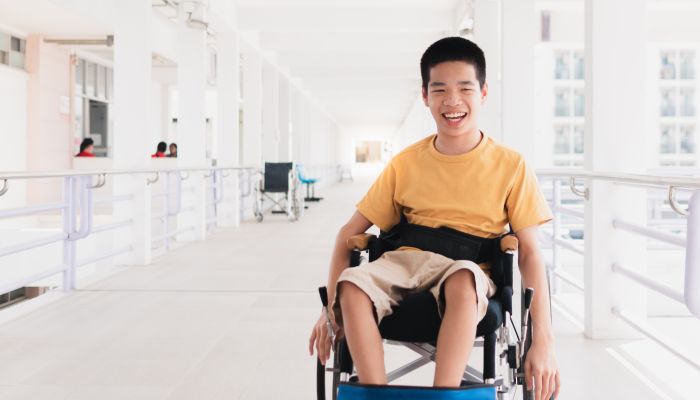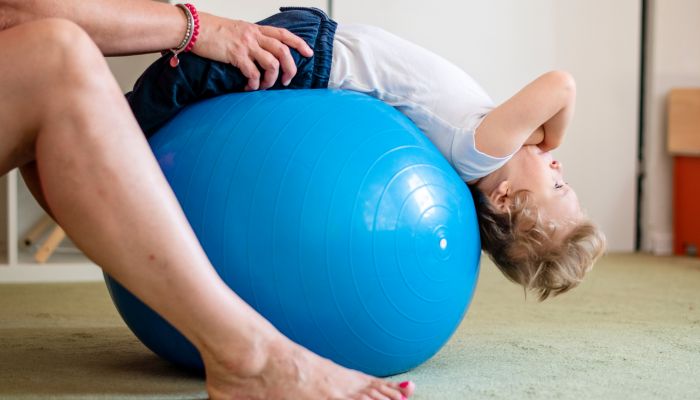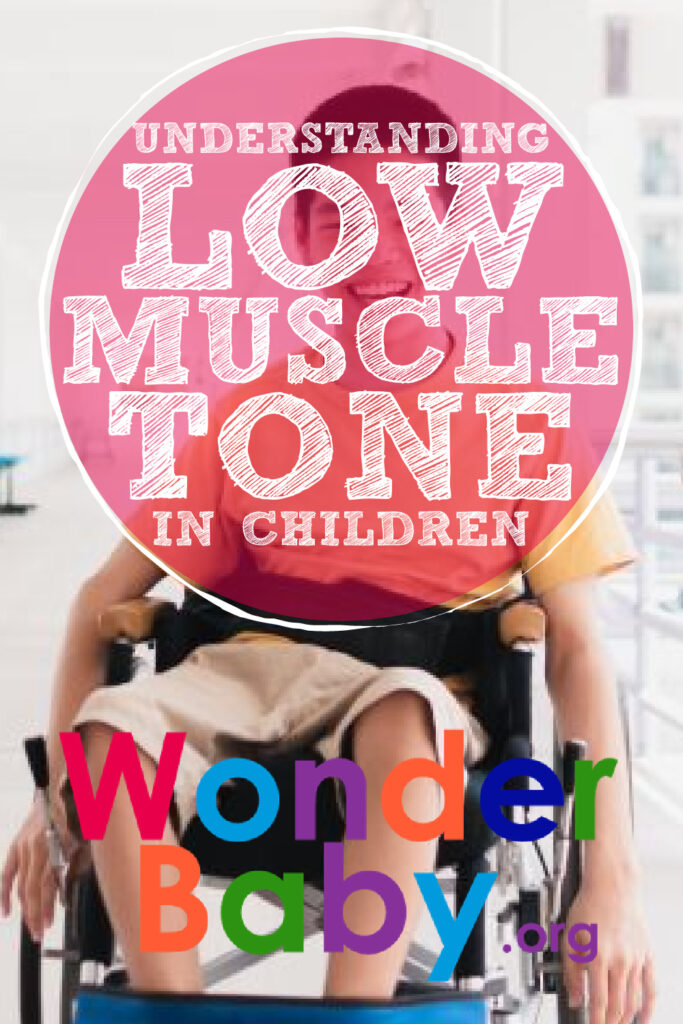Understanding Low Muscle Tone in Children

- Children with low muscle tone may appear floppy, weak, or uncoordinated.
- Some common causes of low muscle tone include Down syndrome, cerebral palsy, or hypermobility disorders.
- Children with low muscle tone may experience delays in gross motor skills, fine motor skills, and speech.
- Common treatments for low muscle tone include physical and occupational therapy.
As parents, we look forward to the day when our babies roll over for the first time or take their first steps. Many of us watch our children with curious fascination from the time they’re born. We wait for a sign that they’re about to do something remarkable.
But what happens when your child doesn’t seem to have the head control to enjoy tummy time? Or if you notice they lack the postural control to sit for more than a moment?
Your child’s inability to keep their body upright or lift their head could be a sign they may lack the muscle strength to perform these tasks. This, when combined with other common symptoms, could be a sign of low muscle tone.
What Is Low Muscle Tone?
Muscles are an important part of your body. They’re responsible for movement, digestion, and other essential functions. Muscle tone refers to the amount of tension, or resistance, within our muscles. Proper muscle tone keeps our bodies upright while we stand and sit. Changes in our muscle tone help us move around and perform other gross motor activities.
Hypotonia, or low muscle tone, is a condition in which a child’s muscles appear floppy, weak, or less stiff than expected for a child. This muscle weakness can impact a child’s motor skills and ability to perform everyday tasks. Because of this, low muscle tone is usually easy to spot and is often diagnosed during infancy.
Hypotonia sometimes occurs as a stand-alone condition called benign congenital hypotonia. However, muscle weakness may also be a symptom of other health conditions that cause developmental delay. These conditions include muscular dystrophy, cerebral palsy, and Down syndrome. Because it commonly overlaps with these and other conditions, the exact rate of infants experiencing low muscle tone is not known.
Standard Features of Low Muscle Tone
A low muscle tone diagnosis usually occurs during infancy. This is because the symptoms are unique and easy to spot. Often, infants with hypotonia do not develop in the same way as their peers.
Some features of low muscle tone in infants include:
- An inability to lift the head
- Feeling limp or like a rag doll when picked up or held
- A weak cry
- Increased joint flexibility
- Poor posture
Children of any age may have the following features if they have hypotonia:
- Decreased muscle tone
- Decreased strength or endurance
- Poor reflexes
- Impaired posture
- Rounded shoulders
- Hypermobile joints
- Gait deviations

Causes of Low Muscle Tone
Sometimes, children experience low muscle tone with no underlying disorder. Other times, a global developmental delay can explain low muscle tone. Hypotonia can also occur because of a neurological, muscular, or genetic health condition. Below are some of the most common causes of low muscle tone in infants and children.
Down Syndrome
Down syndrome, or trisomy 21, is a genetic disorder in which a child has a partial or whole third copy of their 21st chromosome. Children with Down syndrome experience growth delays. They also have mild to moderate intellectual delays. Finally, children with Down syndrome have characteristic facial features.
Most babies born with Down syndrome have poor muscle tone or loose joints. They also have low strength and endurance, making it easy for doctors to identify low muscle tone in babies born with Down syndrome. Down syndrome is also one of the most commonly diagnosed chromosomal conditions in the United States.
Muscular Dystrophy
Muscular dystrophy is a group of diseases that cause loss of muscle mass and progressive weakness throughout the body. In these children, genetic mutations interfere with protein production. Healthy muscles need protein. So, children with muscular dystrophy are unable to maintain muscles in the same way as their peers.
Many children with muscular dystrophy first receive a low muscle tone diagnosis during infancy due to their muscle weakness. As they continue to miss milestones, doctors may test these children for muscular dystrophy.
Cerebral Palsy
Cerebral palsy (CP) is a group of neurological disorders that affect muscle tone, movement and posture. There are different types of cerebral palsy. Children can receive a diagnosis of mild, moderate, or severe CP. Also, the disorder can vary based on the severity of the child’s condition.
Children with hypotonic cerebral palsy have low muscle tone or “floppy muscles.” However, this isn’t always due to poor muscle strength. Most of the time, children with hypotonic CP actually lack muscular stability. Hypotonic cerebral palsy occurs in approximately 2.6 percent of all children with CP.
Hypermobility Disorders
Hypermobility disorders are also commonly associated with muscle weakness. These disorders include Ehlers-Danlos syndrome and Marfan syndrome, and impact a child’s ligaments. They can also lead to muscle weakness due to the increased flexibility of the muscles and joints.
Hypermobility disorders have a genetic component. This means that doctors can perform genetic testing to see if a hypermobility disorder is the underlying cause of your child’s low muscle tone.
Other Genetic Disorders
There are other genetic disorders that sometimes cause issues with motor control, muscle strength, and gross motor skills. These conditions include: Prader-Willi syndrome, Tay-Sachs disease, Williams syndrome, and Trisomy 13. Most of these disorders can be identified through prenatal genetic testing or during infancy.

Symptoms of Low Muscle Tone
Our entire body is made up of muscle groups that help us perform every bodily function you can imagine. Children with low muscle tone often experience symptoms related to gross motor skills. Low muscle tone can also impact fine motor activities, feeding habits, and speech. Issues with your child’s muscles can cause poor endurance, head control, and issues with other functional skills.
Common symptoms of low muscle tone include:
- Lack of core muscle strength
- Poor posture or an inability to sit up independently
- Gross motor delay
- Inability to place weight on legs
- Inability to walk or crawl, or difficulties doing these tasks
- Delayed fine motor skill development
- Difficulty sucking or swallowing
- Delayed speech
- Breathing and feeding difficulties
- Difficulty potty training
So many of these symptoms can impact your child’s ability to live a normal life. As such, early intervention is the best approach to symptom management.
Treating Low Muscle Tone
Hypotonia is usually connected to another underlying condition. Most doctors will first complete various tests to rule out the underlying diagnosis. A full workup includes a test of your child’s motor skills and reflexes and blood work or a karyotype test. Doctors may also run imaging tests such as an MRI or CT scan. These tests will help your child’s doctor recommend the best treatment based on the underlying cause of your child’s low muscle tone.
Children with muscle weakness often take part in physical therapy. This treatment helps a child reach specific gross motor milestones. They also learn exercises for muscle strengthening and building a child’s endurance. Children may attend physical therapy sessions once or twice per week until they reach their treatment goals.
Depending on your child’s age, the physical therapist may give you a list of exercises to perform at home each day. This will help them continue building muscle tone. They may give you suggestions to encourage crawling or advice to help your child walk at home.
Many children with low muscle tone also attend occupational therapy. This therapy helps them further develop their fine motor skills. Occupational therapy focuses on strengthening muscles and enhancing skills. But they focus on small muscle groups. This helps children learn to pick up objects, write their name, and hold forks or other utensils. You can also build toys at home to encourage fine motor development.
Sometimes children need help swallowing, self-feeding, or speaking. In these instances, your child may also attend speech therapy sessions. These therapists help children practice eating, drinking, and speaking.
Children whose hypotonia comes from an underlying condition such as cerebral palsy may need mobility aids. These aids include leg braces such as Supramalleolar Orthosis (SMO), walkers, or crutches. Your child’s physician or physical therapist will recommend these. Luckily, they are often covered by insurance.
Hypotonia is often a lifelong condition people live with. Early intervention treatments to help further develop your child’s muscles can help them live a relatively normal life.

The information WonderBaby provides is not intended to be, and does not constitute, medical or other health advice or diagnosis and should not be used as such. Always consult with a qualified medical professional about your specific circumstances.
Related Posts

Eye Conditions and Syndromes, Visual Impairment
Neuralink Announces Plans to Restore Sight to the Blind with Brain Chip
Elon Musk’s company Neuralink has announced plans to begin human trials of its new “Blindsight” brain chip by the end of 2025.

Special Needs
5 Spring Cleaning Tips for Families of Children with Disabilities
Spring cleaning is an opportunity to create a more accessible, organized, and supportive space for your child with disabilities. Declutter, deep clean, and refresh!

Visual Impairment
The Gift of Understanding: How a Young Child Helps His Blind Father Navigate Life
When a parent is blind, it’s natural for people to wonder how their sighted child will adapt. Will they struggle to understand their parent’s needs? Will they feel burdened by...